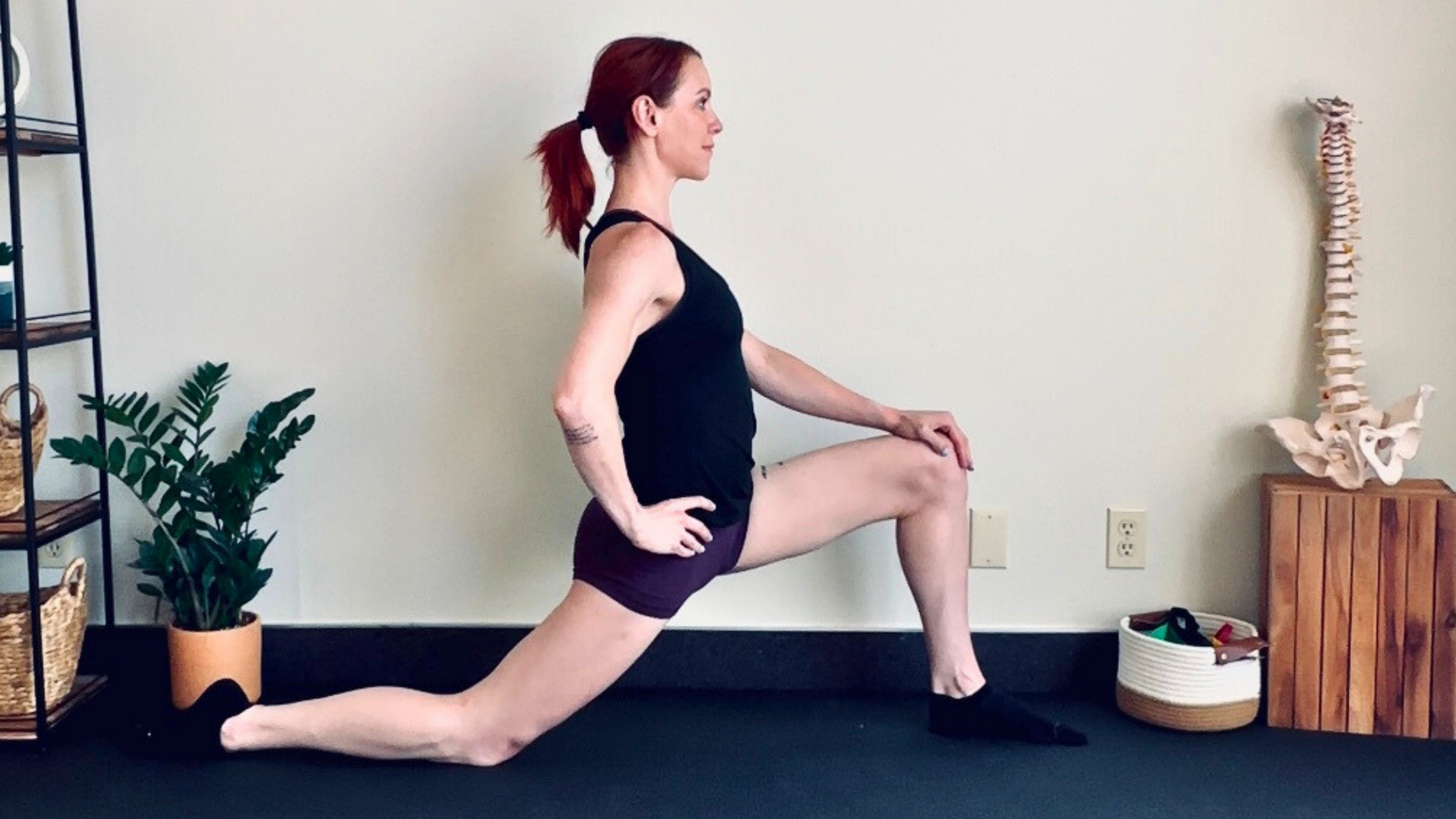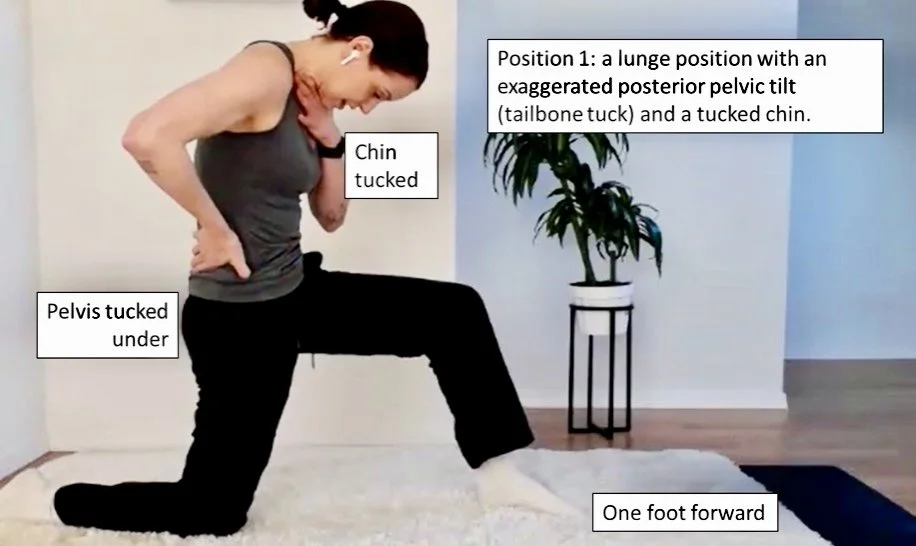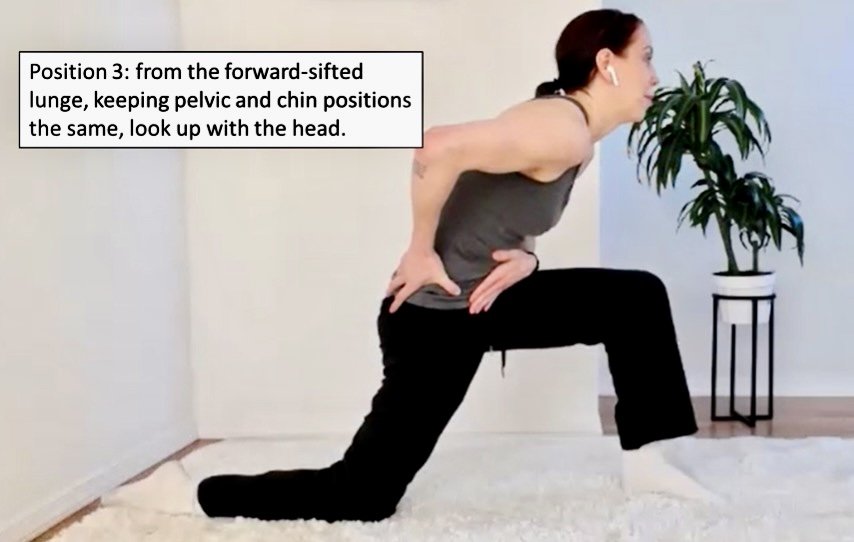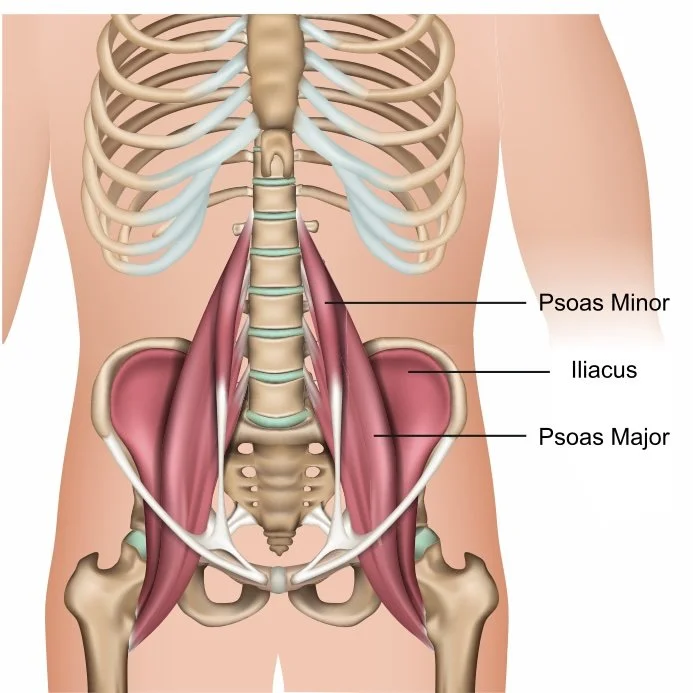Femoral nerve tension: The Hidden Culprit Behind Your Stubbornly Tight Hip Flexors
…and why stretching more usually isn’t the answer.
If your hip flexors STUBBORNLY REFUSE to lengthen despite religiously stretching them, trust me - you are NOT alone. After working with artistic athletes for over a decade, I keep seeing one hidden issue that masquerades as tight hip flexors: femoral nerve tension. Understanding how to self-test for this limitation and safely address it can be the game-changer you need to finally break free from that frustratingly unproductive stretch-and-repeat cycle.
Intro to Nerve tension
Most of us have never heard of femoral nerve tension—the femoral nerve gets way less attention than its posterior counterpart, the sciatic nerve, so let's start there as a point of reference. You've probably heard the term "sciatica" before, which is a catch-all term for irritation of the sciatic nerve (the nerve that runs from your lower back down the back of your leg, photo below).
When you have sciatica, it means that the sciatic nerve is irritated and, as a result, lacks mobility. This can lead to a variety of sensations and symptoms: from diffuse tension along the entire back of your leg to shooting pain in the same region. The irritated sciatic nerve fires up all of the muscles it controls, often resulting in tight hamstrings and calves that don't respond well to stretching.
Here's the key difference: unlike muscles, which are stretchy like a rubber band, nerves are not stretchy. They're more like guitar strings. In a healthy body, nerves must slide and glide along the tissues they pass through, kind of like a cooked spaghetti noodle sliding through a straw (weird analogy, I know, but it works).
When nerves lack mobility, the best way to restore it is through exercises like nerve glides, which involve a series of movements that help restore that back-and-forth sliding motion, versus pulling from both ends, as we do in passive stretching. This is why hamstring stretches won't get you anywhere if you have sciatic nerve tension: you're addressing the wrong structure.
Let’s bring this back around to the femoral nerve, and how it masquerades as tight hip flexors. The femoral nerve is opposite your sciatic nerve and is primarily located on the front of your body: it runs from your lower back, through your hip flexors, and down the front of your thigh.
When your femoral nerve gets "stuck" or irritated anywhere along its pathway, it creates a sensation that feels VERY similar to tight hip flexors. You might experience:
A deep, uncomfy stretching sensation in your hip flexors or quads
Tightness that doesn't improve with traditional stretching
Sometimes, tingling or numbness in the front of your hip or thigh
BUT REMEMBER: Nerve tension doesn't respond well to prolonged static stretching—in fact, aggressive stretching can make it worse. IF STATIC HIP FLEXOR STRETCHES DON’T GET YOU ANYWHERE, THIS IS OFTEN WHY!
SO - how can you differentiate between femoral nerve tension and hip flexor muscle tension? Great question, I would love to tell you.
Here’s a quick, 3 step test to determine if you have femoral nerve tension:
Step 1: Get into a lunge, then tuck your hips under you (posterior pelvic tilt) and round your ENTIRE spine (without hinging forward - pretend like someone’s about to punch you in the stomach and you’re trying to hollow to get away from their fist). Then, tuck your chin to your chest. If you don’t feel anything here, shift forward in your lunge. If you DO feel a stretch before shifting forward, stay there.
Step 2: when you feel a stretch in the front of your hip (hip flexors and/or quads), take note of what you feel, where you feel it, and how intense it is. Catalogue those sensations.
Step 3: without changing ANYTHING ELSE in your rounded-spine lunge, JUST look UP, as if looking at something directly in front of you. The rest of your spine is STILL ROUND.
TEST RESULTS:
Here’s how to interpret the test results: when you changed your neck position and look UP, did the stretch in your hip flexors decrease?
If the intensity of the stretch DECREASES when you look UP, that tells you you have femoral nerve tension.
If the intensity of the stretch DOES NOT CHANGE when you look up, you likely do NOT have femoral nerve tension.
WHY?! Great question. This is because the outermost lining of the femoral nerve - the epineureum, is continuous with the lining of your spinal cord and your brain. So when you bring your chin to your chest, that puts MAXIMAL tension on the femoral nerve…importantly, that chin-to-chest movement changes NOTHING about your hip flexor muscle length, because your hip flexors do NOT cross your neck (image below). So if the sensation of the hip stretch INCREASES with neck flexion, that tells you femoral nerve tension is likely part of the equation for your hip flexor tension.
SO…what can you DO about it?? How do you decrease femoral nerve tension so you can improve your hip extension flexibility? Try this femoral nerve glide BEFORE you stretch your hip flexors, and see how it changes your hip flexor extensibility:
pssst…flexibility coaches: if you like this type of information and want to learn more about my method for flexibility assessment and coaching, click here to get on the waitlist for my flexibility teacher training certification program - launching this fall!
Femoral Nerve Glide:
Start in an upright lunge, rounded spine, tucked pelvis, chin to chest.
Shift forward until you feel a stretching sensation between 3-4 out of 10. Right when you feel that stretch, continue shifting forward but look UP.
Then, reverse it. Bring your chin to chest as you return to your upright lunge.
Too easy/ not feeling anything? Make it MORE intense by keeping your chin tucked the whole time, and shifting forward and back into and out of your lunge. But still keep it UNDER that 4/10 sensation - MORE IS NOT BETTER!! If you push into TOO much of a stretch, these will have the OPPOSITE EFFECT and will tighten your hip flexors right back up.
So - next time you’re working on your hip flexibility, add these in to your warm up BEFORE you stretch! Aim for 2 sets of 8-10 reps.
Want to learn more about how nerve tension affects flexibility? Check out my “Neurodynamics in Performing Arts” course: it’s a self-paced course that goes into ALLLLL the nerdy details about how peripheral nerves can impact our training, how to test for it, and what to DO about it.
Or if you just want to be told what to DO about it and don’t need all the nerdy details, check out my active flexibility courses or my 4-week flexibility series. Both contain flexibility programming that’s designed to address ALL of the biomechanical issues that most commonly limit flexibility.








